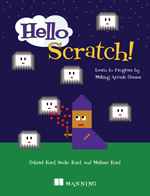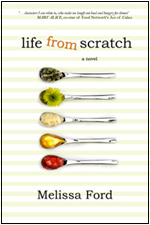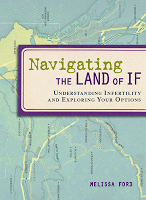Quotient Cafe: Common Core Math
This post will only make sense (and be useful) if you are in 4th grade, in America, learning Common Core math, and have encountered the dreaded Quotient Cafe method. But I am putting this here in case you are (1) in 4th grade, (2) live in America, (3) are learning Common Core math, and (4) have spent the day with your stomach in knots because you don’t understand the Quotient Cafe method.
I made this video to show you the Quotient Cafe method. Thank you to the twins for being the waiter and the note changer.
Get it? Let me know if you have questions. I’m not a math teacher; just a parent who looked at the homework and made this example.













13 comments
I don’t think this is actually part of the common core– it’s just a learning aid developed by the national counsel of teachers of mathematics that can be used with the core. They have a little weblet you can use here: http://illuminations.nctm.org/activity.aspx?id=4197 . The weblet isn’t as good as your video though. There’s other math software programs that do a little better job, I think, though it’s been a long time since we’ve used any.
My son is in 4th grade, IN YOUR SAME SCHOOL DISTRICT, and I have no idea what you are talking about.
Poor Cafe people! 🙂 I think in the Netherlands they put a lot of emphasis on (gu)estimation to get you started with kids math.
The advantage of guessing is that you get a glimpse of what is going on in those little minds, and the teacher gets to ask why, instead of the old way where the students had to learn the rule without (maybe) understanding why.
O well, outsider on all 4 counts, so feel free to ignore me!
😉
Ugh, that seems sooo long and drawn out. Because in my head, I do “Hmmm…38/4. Let’s see. 10X4 =40, so it’s less than 10. How about 9? 9 X4 is 36. 36 is 2 less than 38. Yeah that’s it – 9 R 2.” I guess the Quotient cafe would probably work well for larger numbers.
My only problem is that I would SWEAR that we were doing long division races in 2nd grade when I was a kid. Why does it seem like they’re going so slowly now?
Kill. Me. Now. (I. is in G&T math, so he is doing 3rd and 4th grade math together, and it is all impossibly ridiculous. Or ridiculously impossible. There have been more tears than I care to discuss. But I don’t think we have encountered the Quotient Cafe yet. It’s only a matter of time, I’m sure. Thanks for the example.)
What was wrong with long division? This Quotient Café seems like longer division that what we learned as kids! I probably would have just started handing out M&Ms until I had 2 remaining…& then eaten those two, lol!
I really dislike Common Core. I’m sorry to say 6th grade doesn’t get much better. 😉 Long live long division (say that 5 times fast)!
Please don’t slam me! I’m just playing Devils Advocate. I promise you they will get to long division or what is called the standard algorithm. Our goal in elementary math education has shifted a little bit. After studying how kids learn math (and why they struggle) we have realized that they need a deeper understanding of how numbers work. Base ten operations is a huge part of it. Understanding that 10 ones is the same as a group of ten and 100 is a group of ten tens. This will help them when they move onto algebra because they will want to group like terms! How many of you when you’re doing the problem 26 + 16 say 6 and 6 is 12 carry the one and 2 + 1 + 1 is 4. That’s the standard algorithm. BUT you didn’t really carry a 1. You regrouped a 10. You didn’t really add 2 and 1 and 1, you added 20 and 10 and 10. We as adults know it, but do kids really know that? So that’s why when kids get to division it’s so hard for them to take them apart because there’s so many more steps to remember. It’s not that Common Core says we have to teach if differently, we’re still teaching the same old things, just in different ways. I could go on forever, but if you wanted to delve a little more into why teaching styles have/ are changing. Look into Jane E. Pollack and pedagogical automaticity. So that said Common Core has some great things and some not great things. Just remember we the teachers these days have 0 control over how and what we teach. We just do our best!
Please don’t slam me! I’m just playing Devils Advocate. I promise you they will get to long division or what is called the standard algorithm. Our goal in elementary math education has shifted a little bit. After studying how kids learn math (and why they struggle) we have realized that they need a deeper understanding of how numbers work. Base ten operations is a huge part of it. Understanding that 10 ones is the same as a group of ten and 100 is a group of ten tens. This will help them when they move onto algebra because they will want to group like terms! How many of you when you’re doing the problem 26 + 16 say 6 and 6 is 12 carry the one and 2 + 1 + 1 is 4. That’s the standard algorithm. BUT you didn’t really carry a 1. You regrouped a 10. You didn’t really add 2 and 1 and 1, you added 20 and 10 and 10. We as adults know it, but do kids really know that? So that’s why when kids get to division it’s so hard for them to take numbers apart because there’s so many more steps to remember. Without good number sense, the algorithm is just steps. We want them to understand those steps so when the next level of math is added, it makes sense and they have strategies to fall back on if that standard algorithm doesn’t work….remember when you added that first 2 digit problem when you had to carry? It blew my mind. This year, when I taught it to my special education first graders in my self contained autism classroom, they all looked at me like..no big deal. 12 is the same as 10 + 2 so that ten needs to go over with the other tens. It’s not that Common Core says we have to teach it differently, we’re still teaching the same old things, just in different ways. I could go on forever, but if you wanted to delve a little more into why teaching styles have/ are changing. Look into Jane E. Pollack and pedagogical automaticity. So that said Common Core has some great things and some not great things. Just remember we the teachers these days have very little control over how and what we teach. We just do our best and hope to share our love of learning with our students!
Nice video. It is really interesting. Having taken a lot of extra math in college, the quotient cafe really does reinforce some “tricky” topics in a easy to understand format that many students didn’t get taught. Both ways work. Everyone learns differently. Maybe it is just another tool in the toolbox ?
Plain or peanut?
Ha. Love Lori’s work 🙂
hey,
I came here blog hopping. I am a mom of 5th grader and he studies in Indian school system.
I loved the video and the simplistic approach of teaching.
My experience is to teach them different methods . Kids learn based on their interest, already existing knowledge base, some gears in their mind clank while thinking ,and sometimes one method works sometimes another. We can not stick to the only method prescribed ,as long as all methods are clear and lucid in approach.
It’s like if we teach them only some words first and some sentences of language first …………….. we are limiting their learning.
I feel , teaching is our job and learning is what they do voluntarily. And our job is to facilitate the learning.
I felt ,the video has used very good explanation ,visual and practical approach and it should work for many kids.